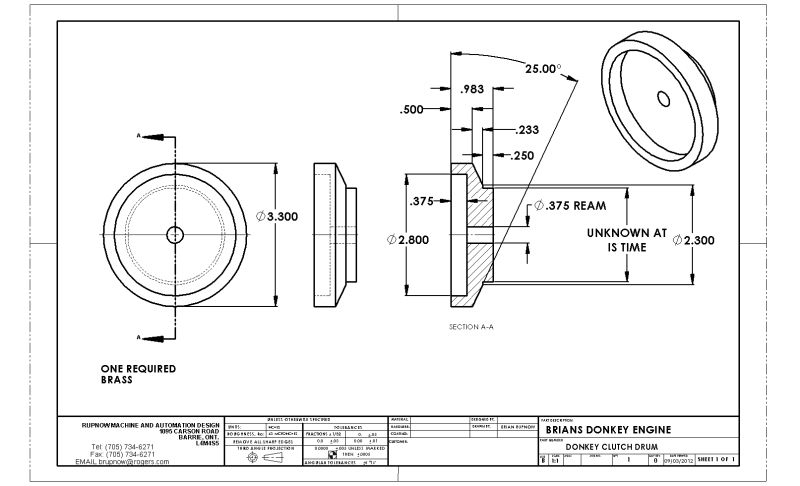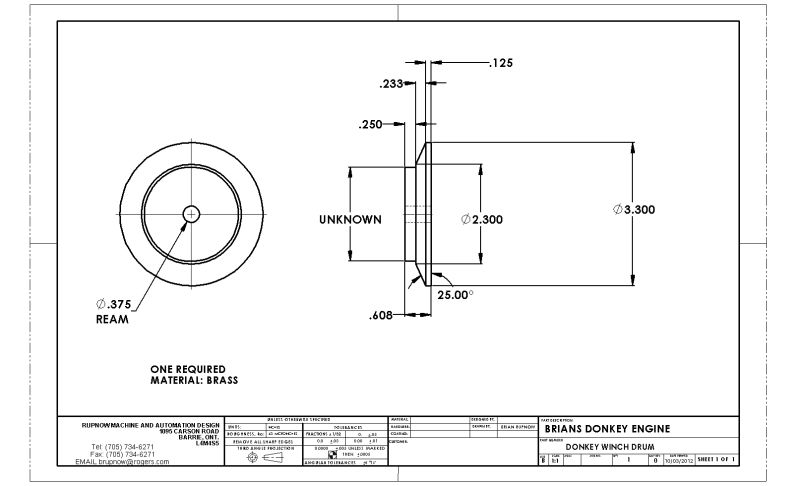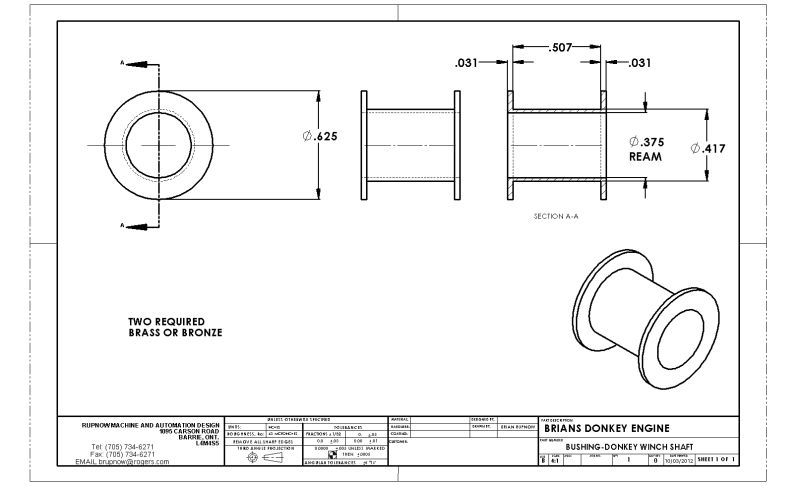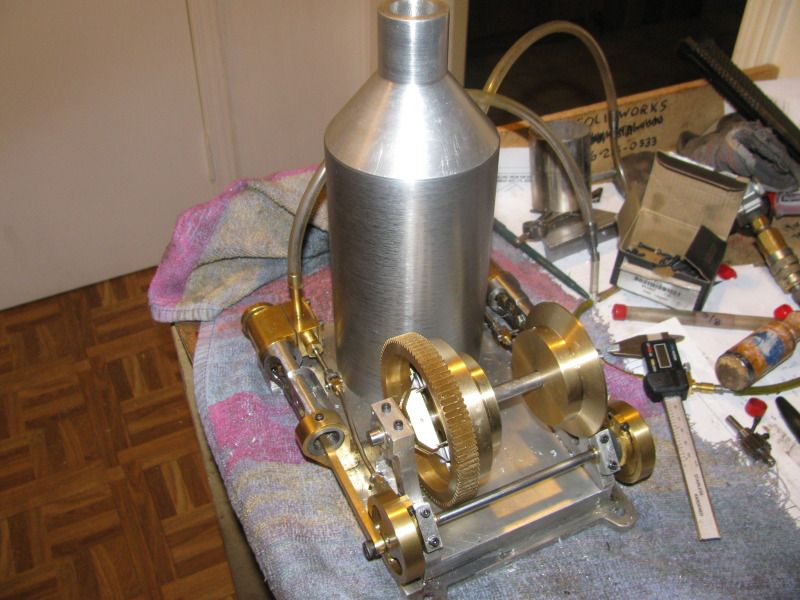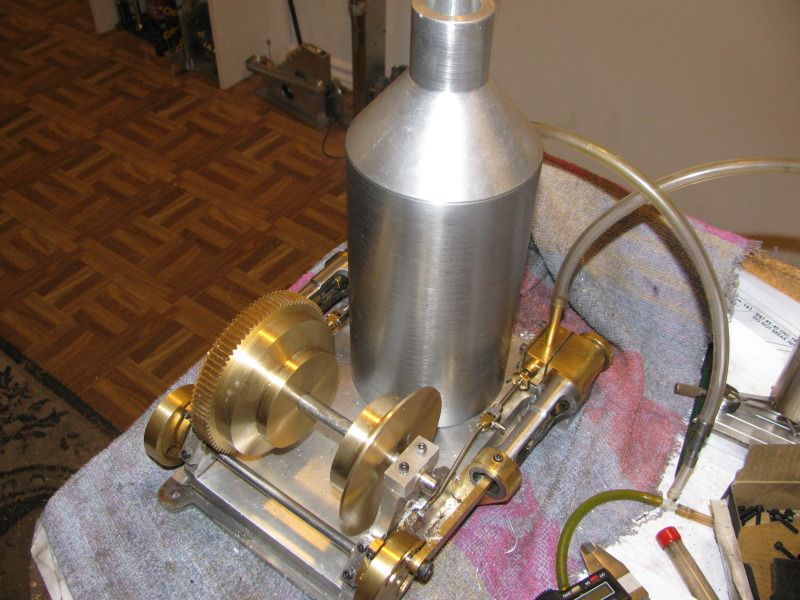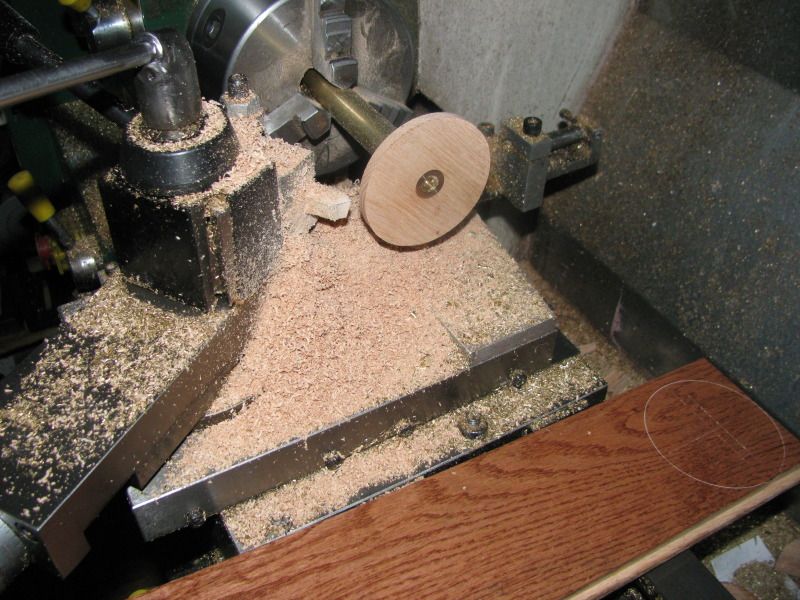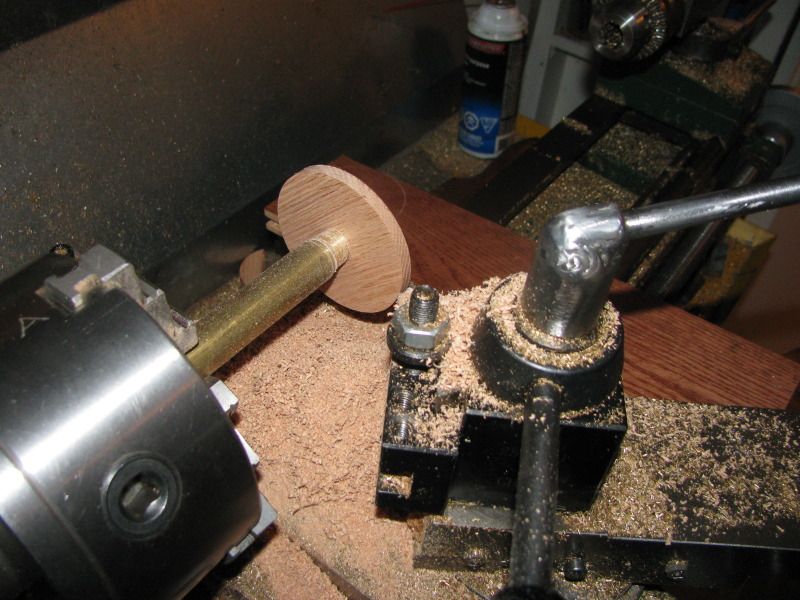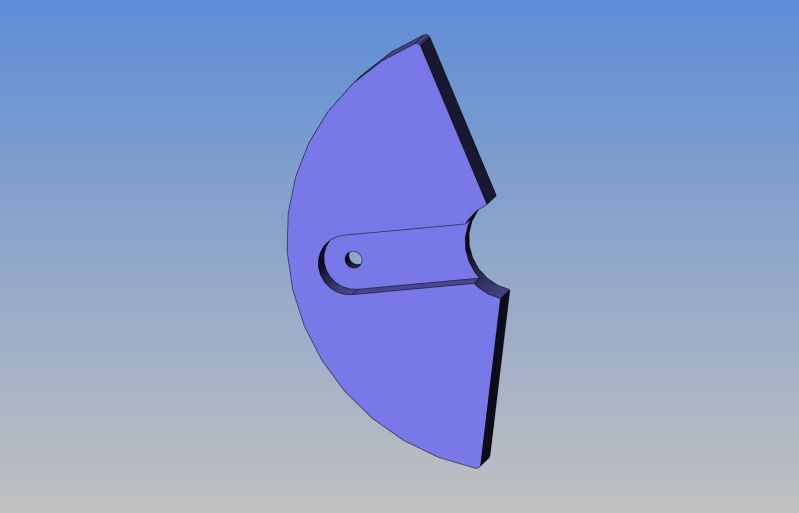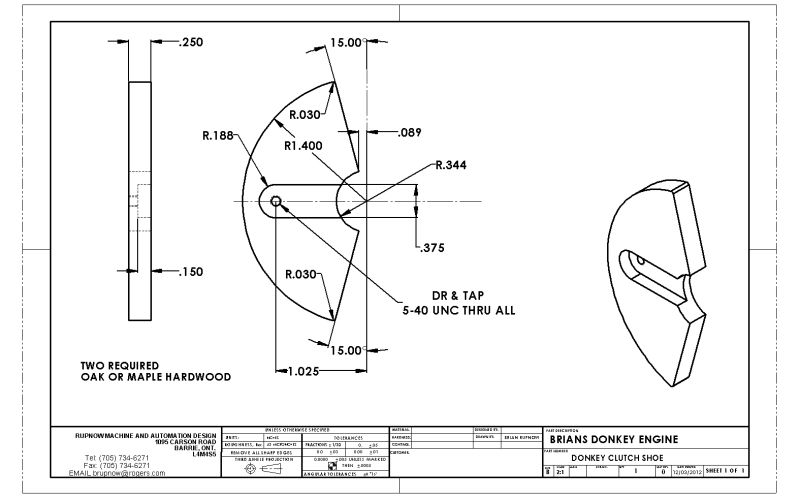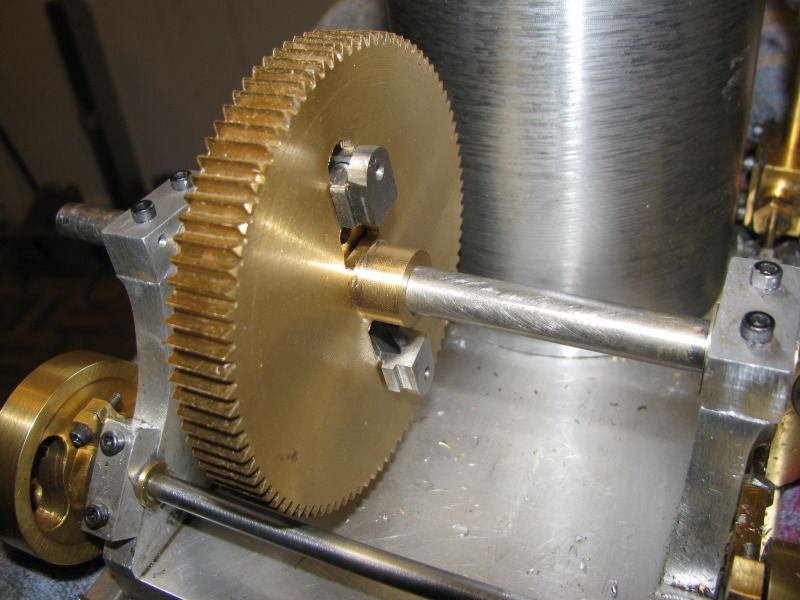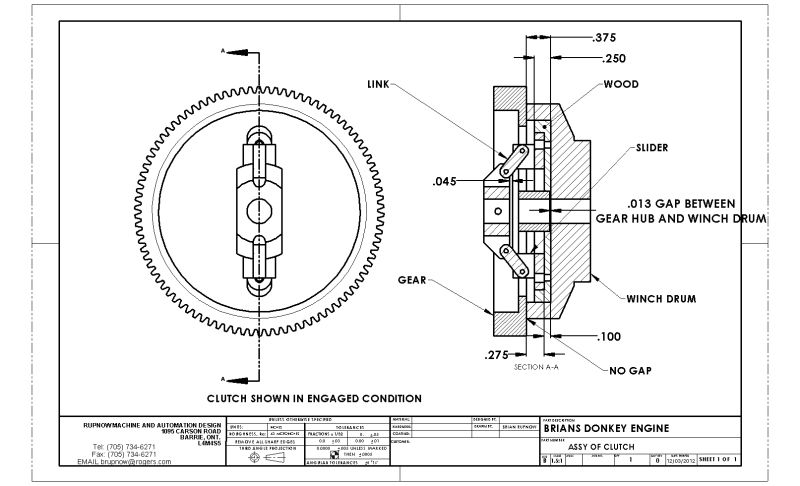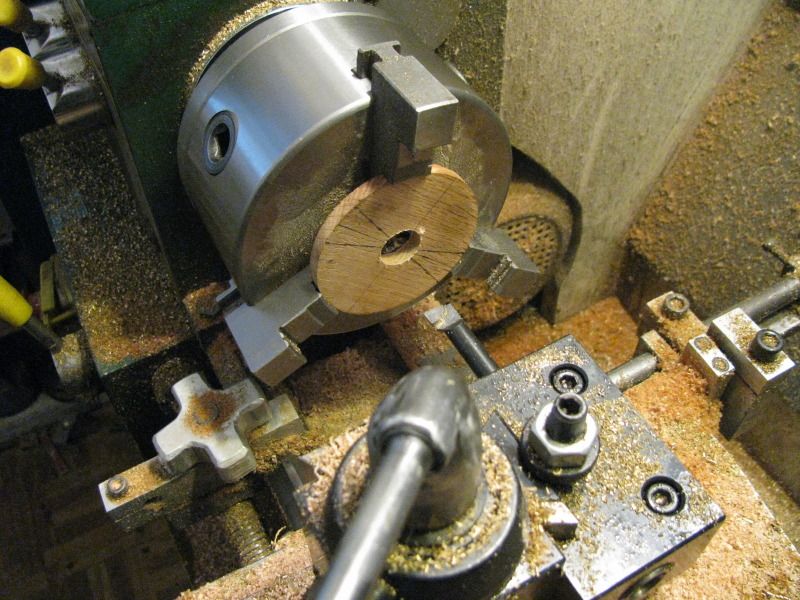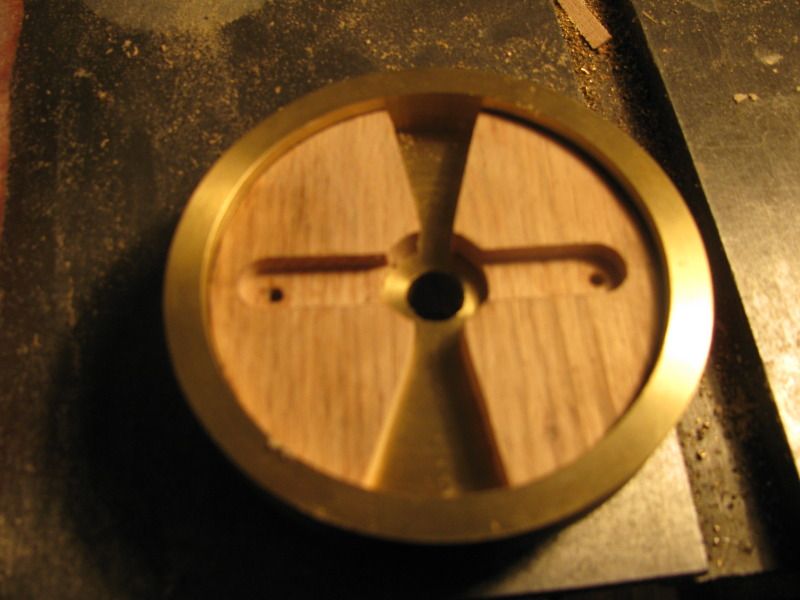Brian
I have been looking at your drawings and if I haven't made an error, something is not
fitting. Looking at the slider in the clutch mechanism, the bottom of the shoe that fits into the
slot in the wooden clutch shoe is .375" off of the face of the gear plate.
Total height .400"
Slot Width - .125"
Top Flange - .080"
---------
Total .375"
And the wooden shoe, after subtracting the depth of the slot adds .100" for a total of .475"
The internal depth of the drum is only .375" which means that there must be a gap between the
face of the gear and the lip of the drum of at least .100" and that is if the face of the wooden
shoe bears against the face of the drum, which it definitely should not do. The only contact
between the drum and the shoe should be the outer edge of the shoe.
I dont see anything that will maintain the relative position of the gear and the drum on the shaft.
What is there to keep the face of the clutch shoes clear of the drum face?
In my design, the inner face of the clutch drum bears on the end of the gear hub, with a bronze
thrust bushing between. The depth of the hub and the bushing keeps the gear and clutch drum
separated by about .015" and also maintains a clearance of about .015" between the shoe face and
the drum.
In this post, where I mention the shoe face, I am talking about the flat face of the disc, not the
edge of the shoe.
It is entirely possible that I have misinterpreted your drawings or added the numbers wrong.
Jerry
